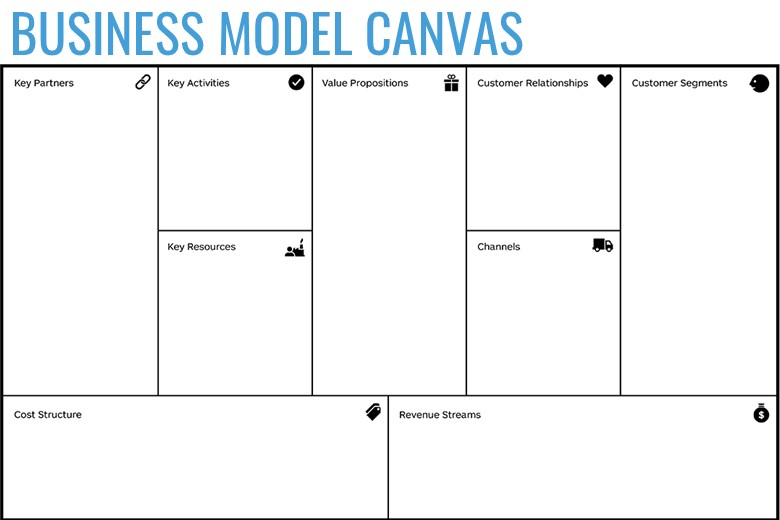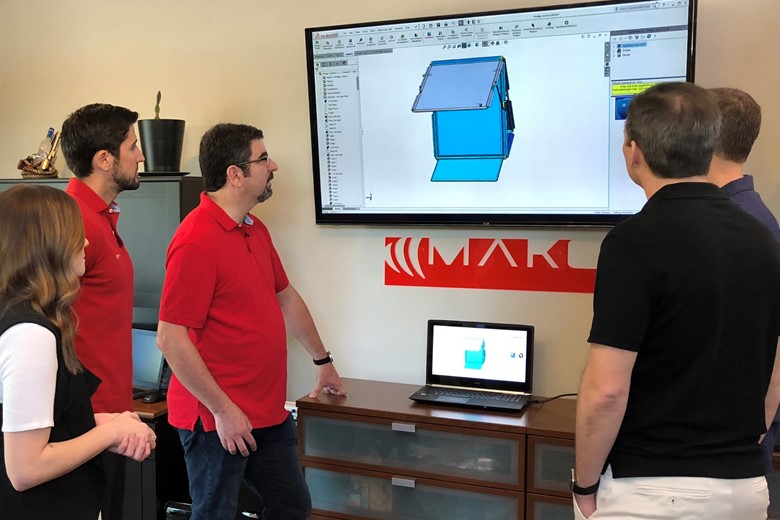A few weeks ago we introduced you to the business plan to effectively communicate your product idea. It’s a great first look for new inventors, business owners, and startups to understand just how much effort and research goes into starting a business. But we realize there’s a lot of writing and research that goes into a business plan.
As Kevin loves to emphasize, simple is better. Today we’re going to introduce you to the evolution of the business plan. It’s the Business Model Canvas, or BMC for short. Invented by Alex Osterwalder, the BMC is how invention makers communicate ideas in a much simpler way.
By the way, this is not to be confused with the BCG Matrix – although the Boston Consulting Matrix is a great tool to validate your idea.
Getting back on track, the BMC is a template that helps deconstruct your idea into your key assumptions based on your research. Like the business plan, each section is connected to one another and helps you structure your strategies, objectives, and tactics.
Unlike the business plan, however, it’s designed to be a single page to ensure you include just the salient information. This means you test, update, and improve the BMC as you please.
Here’s how to get started.

Value Proposition
Of the nine sections in the template, the focal point is the Value Proposition section. Experienced invention makers communicate ideas by stating the pain point your solving and how your product brings value to your customers in this section. To emphasize, this is the foundation of your business. As a result, all other sections in the document converge on this section.
Along with the pain point and solution, you’ll also list gain creators and pain relievers. Gains can include things such as social status, aesthetics, and environmental benefits, while examples of Pain Relievers are convenience, saving time, and saving money. But these values depend on your Customer Segments.
Customer Segments
When you sell to businesses and customers, they value different things. For example, customers are usually willing to pay a premium for a product as long as it fulfills certain values. When you’re trying to sell to retail businesses, they’ll certainly feel different about this because expensive items are typically difficult to resale to customers.
Furthermore, do these high-ticket items provide worthwhile profit margins to the retail business? So, in this section, you’ll try to break down the characteristics and demographics of your target market.
Customer Relationships
Customers will interact with your brand differently depending on their characteristics and demographics as defined in your Customer Segments. Who is your audience interacting with and how long is that relationship?
Younger customers may be more receptive to regular short bursts of relatable social media content to passively learn more about your brand. Conversely, your B2B customers will probably prefer expos and trade shows to directly interact with your product and eventually build a relationship with an account manager, sales representative, and anyone else who handles whoever handles their orders over time in the long term.

Channels
Marketing is the rocket fuel that grows your business. Good invention makers communicate ideas through various marketing channels to reach different demographics. You’ll want to demonstrate the salient parts of the Value Proposition to the appropriate Customer Segments to drive the right kind of awareness to nurture them into eventually purchasing your product.
Remember, it takes about seven times for a lead to hear about your product or brand before they convert into a customer. In this section, you’ll consider what traditional or digital marketing strategies you’ll use to market your product.
Key Resources
In general, these are the people and tools that help you achieve Key Activities and successfully deliver the solutions as outlined in your Value Proposition. This includes suppliers, office spaces, equipment, and internal staff.
Key Partners
These are the third-party agencies like MAKO Design + Invent who help you achieve Key Activities and successfully deliver the solutions as outlined in your Value Proposition. As one of the premier product development agencies, inventors know they can trust our award-winning services to handle their end-to-end product development needs.
Key Activities
These are the specific tasks you need to complete to achieve the Value Proposition for your Customer Segments. As the pioneer in our industry, this is where MAKO shines. Our offices are decorated with dozens of business and design-related awards. Despite our pedigree, our mission hasn’t changed since our inception back in 1999 – to provide affordable and world-class product development services to startups, small businesses, and inventors.
Based on how invention makers communicate ideas to us, we’ll prescribe the necessary tools, services, and resources. Whether it’s concept sketches, internal electrical design and engineering, physical engineering, prototyping, prototype testing, or manufacturing, we’re here to help.

Cost Structure
This is the estimated amount of money it takes to run the business. This section considers things such as office rent, office supplies, utilities, employee wages, raw materials, marketing, furniture, and supplies.
Revenue Streams
How much and how often does a customer pay? With B2B businesses, consider what margins to provide as they increase their order sizes with you. With regular customers, think of subscription models, services, or other ways to get recurring or supplementary revenue on top of the revenue your product generates.
There’s no right or wrong way to go about this, it’s all about what you’re comfortable with. Those who enjoy detailed long-form documents can stick with the business plan. Others who enjoy leaner business documents should try the BMC.
About: MAKO Design + Invent is the original firm providing world-class consumer product development services tailored to startups, small manufacturers, and inventors. Simply put, we are the leading one-stop-shop for developing your physical product from idea to store shelves, all in a high-quality, cost-effective, and timely manner. We operate as one powerhouse 30-person product design team spread across 4 offices to serve you (Austin, Miami, San Francisco, & Toronto). We have full-stack in-house industrial design, mechanical engineering, electrical engineering, patent referral, prototyping, and manufacturing services. To assist our startup and inventor clients, in addition to above, we help with business strategy, product strategy, marketing, and sales/distribution for all consumer product categories. Also, our founder Kevin Mako hosts The Product Startup Podcast, the industry's leading hardware podcast. Check it out for tips, interviews, and best practices for hardware startups, inventors, and product developers. Click HERE to learn more about MAKO Design + Invent!







